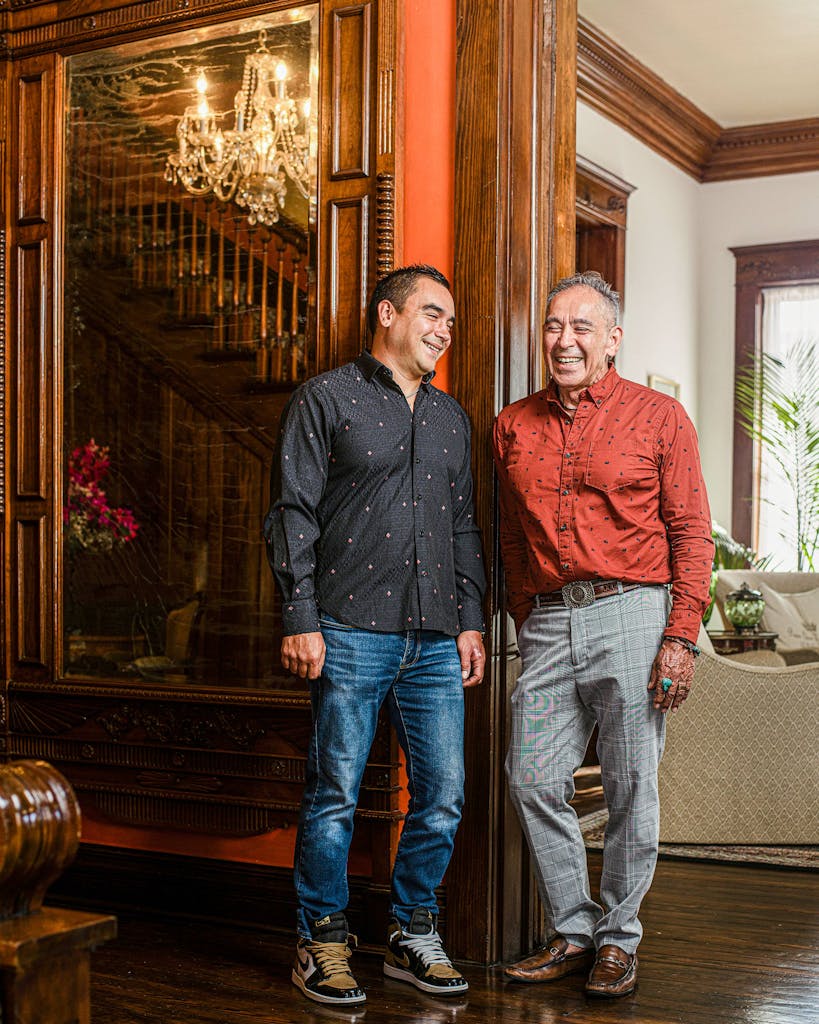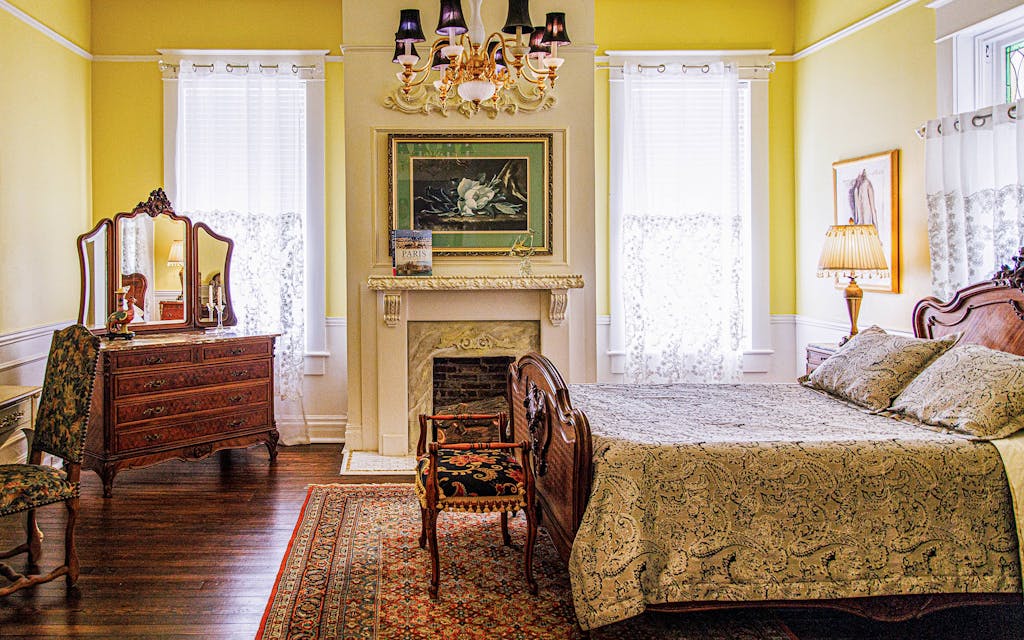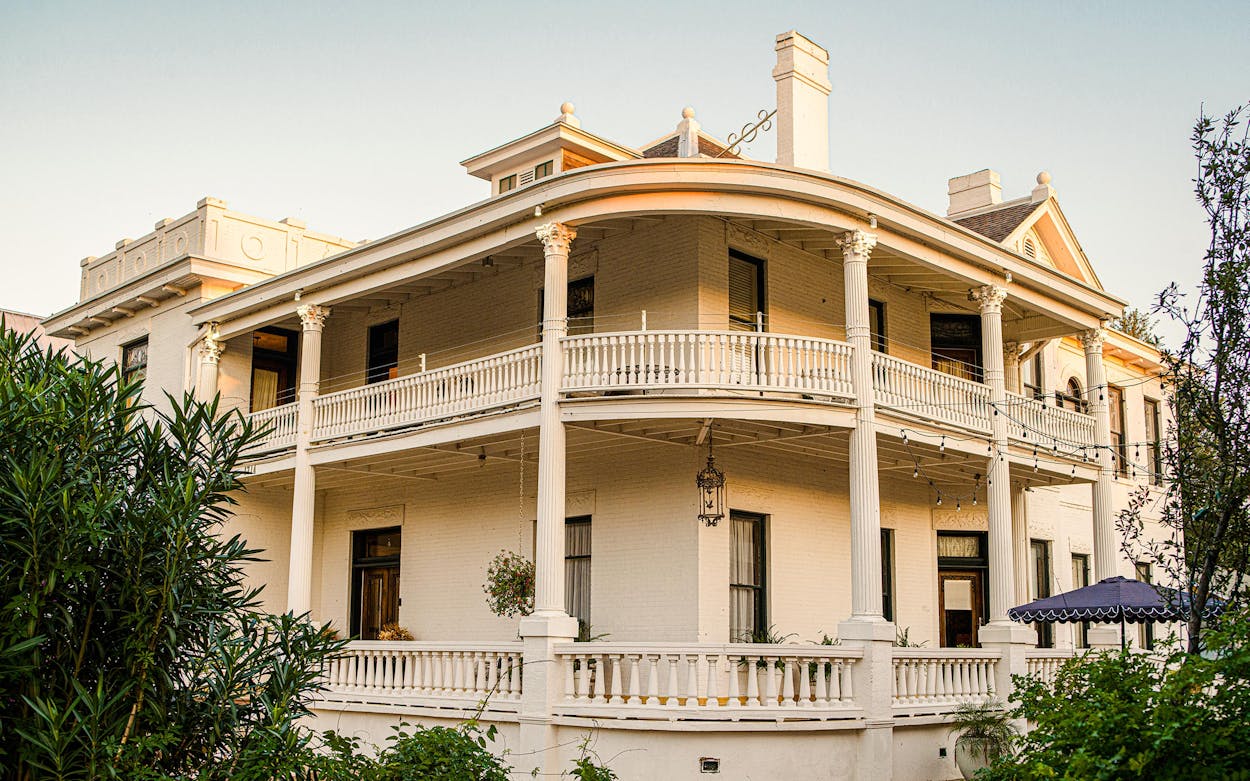Roberto Gonzalez was only thirteen years old in the mid-sixties when he began helping out at a high-end antiques store owned by Anita Martin, considered the first lady of Laredo, who was married to the city’s patrón mayor, J. C. “Pepe” Martin. After a few years, Anita Martin came to the teen one day with a collection of large mirrors whose wooden frames had been chipped and scuffed in transit. “She was crying,” Gonzalez remembers, because she had already sold them. Armed with glue, plaster, and a chisel, he carved out the imperfections and fabricated new details. When he was finished, the mirrors were so immaculate that Martin handed him a check for $2,500, a sum almost too great for him to comprehend. “This is for you,” she told him, “to become an architect.”
Nearly sixty years later, Gonzalez, now 72, is the co-owner, along with his wife, Teresa, of Design Ideals, an architecture and design firm in Laredo. He has continued to restore everything from furniture to homes, but perhaps his most significant project is one of his most recent: the century-old Peter Leyendecker House, which he and his family now operate as the Laredo Mansion bed-and-breakfast, not far from the now-closed antiques store where he once worked. The inn, which opened in 2019, is one of several beloved properties that have been renovated as part of a community-led revitalization of the downtown area of this border city of about 250,000 residents. In spite of what they describe as antiquated building codes and zoning restrictions, local entrepreneurs such as Gonzalez have continued to push city leaders to help remake the neglected historic district into an engaging tourist destination.

Gonzalez, who earned a degree in architecture from the University of Texas at Austin, returned to his hometown after college, but his work can be seen all across the central and southern regions of the state. He’s designed sprawling ranch houses in Pearsall and restored country homes in Kerrville. In 2018, his son, Roberto D. “Beto” Gonzalez, an insurance agent, persuaded his parents to help him fix up the old cottage and stables behind his house and turn them into short-term rentals. “They were shacks,” recalls Teresa, who is also an architect. When the apartments attracted brisk bookings on Airbnb, Beto knew he was onto something.
The Leyendecker house, only one block from Beto’s home, had fallen into such disrepair that he never gave it a second thought. For decades the Laredo Independent School District had used the home as a library, an event center, and a cafeteria, but the structure hadn’t been properly maintained. By the time the building was abandoned in 2017, half of the second-floor balcony had been destroyed by water rot, and a giant hole had opened in the roof.
For several months Beto ignored the “For Auction” sign outside the house, until his father persuaded him to check it out. The two walked over to the home and wiped away the grime from a window to peek inside. “This place has got potential,” Beto remembers saying.
When Peter P. Leyendecker decided to build a home in the early 1900s, his wife, Frances, had one condition: it had to reflect her French heritage.
The industrial revolution and a new railroad that connected Mexico to the United States had brought not only more commerce to Laredo in the 1880s, but also a wave of immigrants who had come to the U.S. from Europe. “They weren’t peasants,” says Margarita Araiza, the executive director of the Webb County Heritage Foundation. “They were wealthy back in their home country and made even more money here to continue their lifestyle.” Leyendecker, the son of a well-heeled German merchant, found success as the owner of one of Laredo’s first lumberyards.

By the early 1900s, many of the well-off, white, English-speaking
newcomers had settled near downtown in the St. Peter’s neighborhood, which covered about 36 blocks northwest of San Agustin Cathedral, the Mexican heart of the city. There, they established St. Peter the Apostle Church, where they could listen to mass in English—a first for the city.
Like several of the homes in St. Peter’s, Leyendecker’s was Classical Revival in style, with an enormous wraparound porch and towering Corinthian columns. Frances, who was born in New Orleans, ordered stained glass windows, ornate crystal chandeliers, and a floor-to-ceiling mirror with a hand-carved wooden frame, all imported from France. Completed around 1914, the six-thousand-square-foot beauty stands two stories tall and includes four bedrooms, a staircase with a wooden balustrade, two sitting rooms adorned with chandeliers dripping in lacy gold and crystals, and a dining room with a built-in hutch fireplace. Every wooden detail, from the doors to the crown molding running across the edges of the twelve-foot ceilings, showcases intricate craftsmanship with flourishes and ornamentation that would feel at home in Versailles.
Looking through that dusty window, Beto and his father could see some of those features and knew this was an opportunity they couldn’t pass up. They put in a bid of $146,000 at a silent auction, and in January 2019, the house was officially theirs. That was the good news. The bad news: their punch list of needed repairs was as long as an arm.
“It was a house of a million details,” Beto says on a warm summer day from the rebuilt balcony. The roof required patching, most of the plumbing needed to be replaced, certain trees had to be removed, and new restrooms had to be added. All the wooden floors and details needed to be sanded, resealed, and stained. Beto spent a week on his hands and knees scraping dirt and grime off the wraparound front porch with razor blades to uncover the original painted concrete tiles. Elsewhere in the house, many lovely features were still intact, including glazed tiles by the fireplaces. Frances’s mirror still stands across from the staircase, and a photograph of it being delivered in the 1900s is on display nearby.


The Laredo Mansion opened in June 2019, fewer than six months after the Gonzalezes and their small team started the renovation. It’s not just a bed-and-breakfast. It’s a community space for murder-mystery parties, weddings, and outdoor yoga classes. It’s also become a favorite backdrop for locals taking photographs for special occasions. Overnight guests can choose one of four suites, each decorated in a distinct style—they’re named Contemporary, French, Mexican, and Victorian—starting at about $109.
DeAnne Economedes, who lives in McAllen and often drives the three hours to Laredo to work at the South Texas Food Bank, has stayed at the mansion many times, choosing it over other lodgings because “it feels like Laredo.” She says walking into some of the suites is like entering another era. “When I’m in those rooms I don’t know if I’m supposed to be putting on a corset and huge hat before going downstairs.”
Although the bed-and-breakfast seems to be thriving, many properties in the neighborhood still await their second life. “Some of those buildings are just run down,” says local historian Jerry Thompson, a professor at Texas A&M International University. “A lot of people call it demolition by neglect.”
Roberto Gonzalez is hopeful he and other investors can save more of the historic area. For him, revitalization is a way to preserve Laredo’s history and help the city become the hub for some of the best Mexican food, art, and culture this side of the border. “This is the time for Laredo,” he says. “It’s like having a jewel right next to you, but you can’t see the shine.”
This article originally appeared in the November 2022 issue of Texas Monthly with the headline “A Crown Jewel of Laredo.” Subscribe today.







